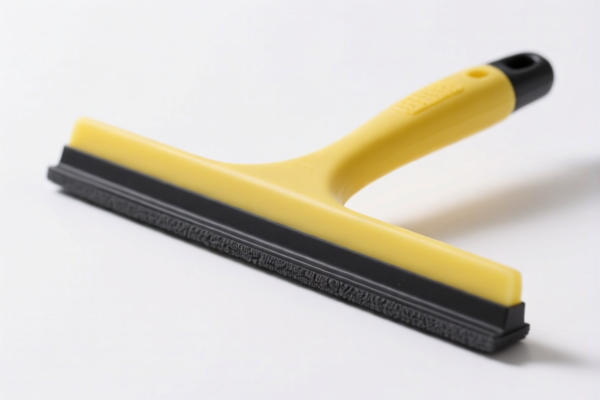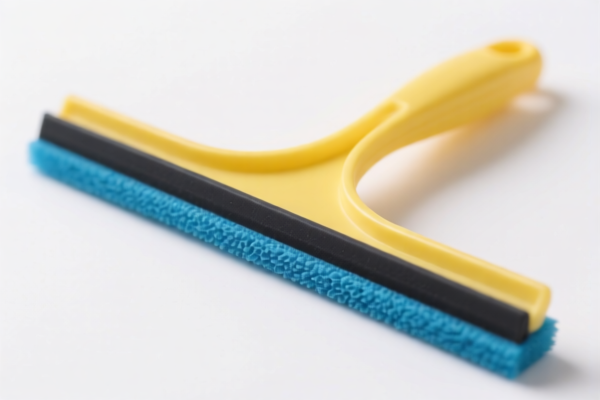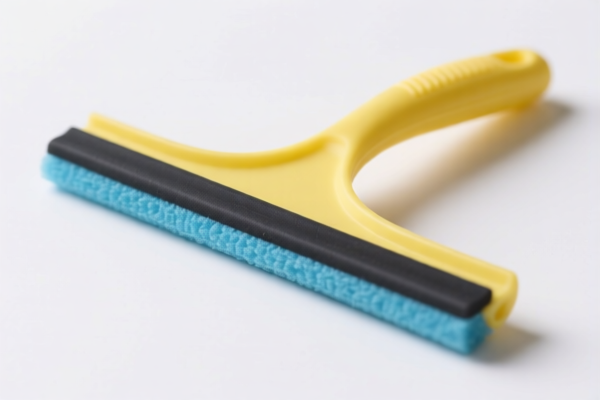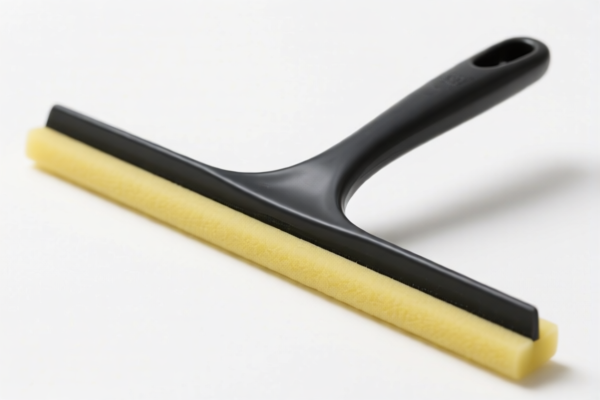| HS Code | Official Doc | Tariff Rate | Origin | Destination | Effective Date |
|---|---|---|---|---|---|
| 6815994170 | Doc | 55.0% | CN | US | 2025-05-12 |
| 6815992000 | Doc | 55.0% | CN | US | 2025-05-12 |
| 3910000000 | Doc | 58.0% | CN | US | 2025-05-12 |
| 3926904000 | Doc | 32.8% | CN | US | 2025-05-12 |
| 3926909989 | Doc | 42.8% | CN | US | 2025-05-12 |
| 4016990500 | Doc | 40.9% | CN | US | 2025-05-12 |
| 4016995500 | Doc | 57.5% | CN | US | 2025-05-12 |
| 4005910000 | Doc | 55.0% | CN | US | 2025-05-12 |
| 4005990000 | Doc | 55.0% | CN | US | 2025-05-12 |
| 6914108000 | Doc | 64.0% | CN | US | 2025-05-12 |
| 6914908000 | Doc | 60.6% | CN | US | 2025-05-12 |
| 6909900000 | Doc | 59.0% | CN | US | 2025-05-12 |




Silicone Squeegee
A silicone squeegee is a tool primarily used for removing or redistributing liquids, typically water, from smooth surfaces. It consists of a flexible blade made of silicone rubber attached to a handle.
Material:
The core component is silicone rubber. This material is favored due to its:
- Flexibility: Allows for conforming to surface irregularities.
- Heat Resistance: Can withstand hot water and steam.
- Non-Staining & Odorless: Doesn't absorb odors or harbor bacteria easily.
- Durability: Resistant to tearing and degradation.
- Non-Scratch: Safe for delicate surfaces.
- Chemical Resistance: Tolerant to many cleaning solutions.
The handle is commonly made of plastic (polypropylene, ABS) or sometimes metal (stainless steel) for increased durability.
Purpose:
The primary purpose is to efficiently move liquids without leaving streaks or residue.
Function:
The flexible silicone blade creates a tight seal against the surface, displacing liquid ahead of it. The handle provides leverage for consistent pressure and control. The blade's flexibility allows it to follow contours and remove liquid from textured surfaces more effectively than rigid alternatives.
Usage Scenarios:
- Shower Doors & Walls: Removing water and soap scum to prevent water spots and mildew.
- Windows & Mirrors: Cleaning glass surfaces, leaving a streak-free finish.
- Tile & Grout: Redistributing cleaning solutions or removing excess water.
- Car Windows & Windshields: Removing water after washing or applying cleaning products.
- Kitchen Countertops & Sinks: Wiping down surfaces and directing water towards drains.
- Screen Printing: Applying and spreading ink evenly across screens.
- Resin Art: Spreading epoxy resin smoothly.
Common Types:
- Handheld Squeegees: The most common type, available in various sizes and blade shapes.
- Microfiber Squeegees: Feature a microfiber pad integrated with the silicone blade for combined cleaning and drying.
- Spray Squeegees: Incorporate a spray nozzle to dispense cleaning solution simultaneously.
- Window Squeegees: Designed specifically for windows, often with ergonomic handles and replaceable blades.
- Floor Squeegees: Larger versions with longer handles for sweeping water across floors.
- Automotive Squeegees: Smaller, often with a curved blade for car windshields and windows.
Silicone Squeegee Classification and Tariff Information
A silicone squeegee is typically used for cleaning surfaces, removing liquids like water from glass or other smooth materials, and is composed of silicone rubber. Based on this description, the following HS codes are relevant:
- 3910.00.00.00: Silicones in primary forms. This code covers silicone rubber in its basic, unprocessed state. It is the foundational material for many silicone products, including squeegees.
- 4016.99.05.00: Other articles of vulcanized rubber other than hard rubber: Other: Other: Household articles not elsewhere specified or included. Since a squeegee is often used in household cleaning, this code may apply if it's made of vulcanized rubber.
- 3926.90.40.00: Other articles of plastics and articles of other materials of headings 3901 to 3914: Other: Imitation gemstones. While less directly applicable, if the squeegee has decorative elements resembling gemstones made of plastic or other materials within headings 3901-3914, this code could be considered.
Tariff Details:
- 3910.00.00.00: A base tariff of 3.0% applies, along with an additional tariff of 25.0%. After April 2, 2025, the additional tariff increases to 30.0%, resulting in a total tariff of 58.0%.
- 4016.99.05.00: A base tariff of 3.4% applies, along with an additional tariff of 7.5%. After April 2, 2025, the additional tariff increases to 30.0%, resulting in a total tariff of 40.9%.
- 3926.90.40.00: A base tariff of 2.8% applies, with no additional tariff currently. After April 2, 2025, an additional tariff of 30.0% will be applied, resulting in a total tariff of 32.8%.
Important Considerations:
It is crucial to determine the exact material composition of the squeegee. If it is primarily silicone rubber, 3910.00.00.00 is the most appropriate code. If it is made of vulcanized rubber, 4016.99.05.00 should be considered. If decorative plastic elements are present, 3926.90.40.00 may also be relevant.
Customer Reviews
No reviews yet.